We've got three flagstone areas in our yard: the patio under the deck, the landing on the main stairway down to the patio, and the patio. All of them originally had a form of crushed limestone filling all of the cracks between the stones, but I've been slowly replacing that gritty, messy material with green.
The cracks in the patio under the deck are filled with moss, and it works well there as long as we don't let it dry out too much (and if the birds and animals don't dig it up too much), but in the sunny areas the moss just doesn't last. The best result so far has been with a form of creeping thyme called 'minus'.
I went looking for more of this to add to the stairway landing (I don't know if that's the right term -- it's a set of stairs, then this small patio, then another set of stairs) but I couldn't find it locally. I did find a couple of other similar plants that I'm going to try though.
First I need to fix this uneven stone. It settled a bit (I think because a mole tunneled underneath it) and is a trip hazard, so I'll pry it up and jam more of the crushed rock underneath it.
This material is called "minus screenings" at the local material supply where I get it. It takes a lot of pounding with an old screwdriver to pack the filler in, but you need to keep packing until you can't fit any more or the stones won't be solid, or may settle again.
Here's a look at the entire landing once the stone has been leveled:
You can see the thyme on the left, and the rest of the cracks have started filling in with creeping jenny and stringy stonecrop. I'll yank all of that jenny and stonecrop out so I have a clean slate:
Once I did I noticed that a few of the other stones needed a bit of leveling too:
Now that is done so I can start planting. Here's the 'minus' thyme again:
These are the two similar plants I found:
That's a "miniature stonecrop" sedum requieni. It looks pretty darn close to the 'minus' thyme and should be just as tough if not tougher, so I'm eager to try it out. Plus it was on the 75% off table at the nursery -- gotta love sale plants!
The second one is another thyme called 'Elfin'. It's not quite as small-leaved as the 'minus', but I'll give it a try.
The sedum has way too much soil and rootball:
So I'll just rip off the bottom half:
Now just jam it in the small planting hole I made by removing the small flagstone fragment:
I actually tore this plant into three separate parts:
Groundcover plants are really tolerant of this, as they typically root everywhere they touch the soil. Sedum in particular are super-simple to root this way.
To fill the cracks I use a mixture of topsoil and the screenings, then pack it a few inches around the plants. Further away it's just straight screenings (no topsoil). The thyme has been spreading into the pure screenings areas with no problems, but I want the plant to have some topsoil near it to help it get established.
I did the exact same thing with the 'Elfin' thyme (ripped off the bottom part of the rootball, broke the plant into multiple parts, jammed into planting holes, etc.) and with a little spray of water to settle everything in and clean the flagstones off, I'm finished:
(The flagstones change color a bit when they're wet.)
Looks like those plants have been there forever, doesn't it? Hopefully they'll do well here and spread quickly. Once I see how they're doing I'll probably take small sections of sedum off and plant them in middle parts of the cracks to help it fill in faster.
Let's take one last look at each of the three plants so see how they compare. First is the original thymus 'minus', then is the sedum, and last is the thymus 'Elfin':
They're all so similar! I'll have to see what they look like in a month or so.
That takes care of the stairway landing, but I have a similar issue with the patio below this. It's got a couple of types of moss which has now gone dormant (not dead -- it will come back when it gets cooler and wetter), plus "Irish moss" Sagina subulata:
As you can see, they're pretty ugly. Hopefully the sedum will do better, as it requires much less moisture. My only concern is that later in the summer when the vines cover the pergola, this area may not get enough sunlight for the sedum, but I won't know until I try, right?
Here's the "before" shot, after pulling the weeds:
No stone leveling needed here, so it's just dig some planting holes:
Then put in the plants, and fill around them with the topsoil/screenings mixture, and spray down with water:
It's nice to see a little bit of green down there again!
Some of the little parts that broke off just got planted:
Sedum is usually extremely quick to root, so I'm hoping these will take root and start growing pretty quickly.
I've written about sedums before, and how I have so many of them. When I bought these plants the other morning, I also got this other really cool sedum dasyphyllum 'Major', or "Corsican stonecrop":
What a beautiful form and color, plus look at the great texture:
I've got to plant this next to the "stream" so I can easily see it every day. I'll put it here:
The soil here is unamended clay and sedum likes more drainage so I'll add some of the screenings that I got when digging the planting holes in the flagstone cracks, then plant:
Looks good! As always it will look better once it fills in a bit more, but I like it!
One thing I like to do when putting a new plant in is take a cutting. This way if the plant dies, or if a raccoon or other animal eats it I'll have a backup. Sedum is so eager to root:
You can see the little roots forming already. I just need to lay this piece on the ground for a week or two and it will be rooted and start producing a whole new plant.
What a productive, fun morning! I'll post an update on these plants in a few weeks (or if something unexpected happens to them).
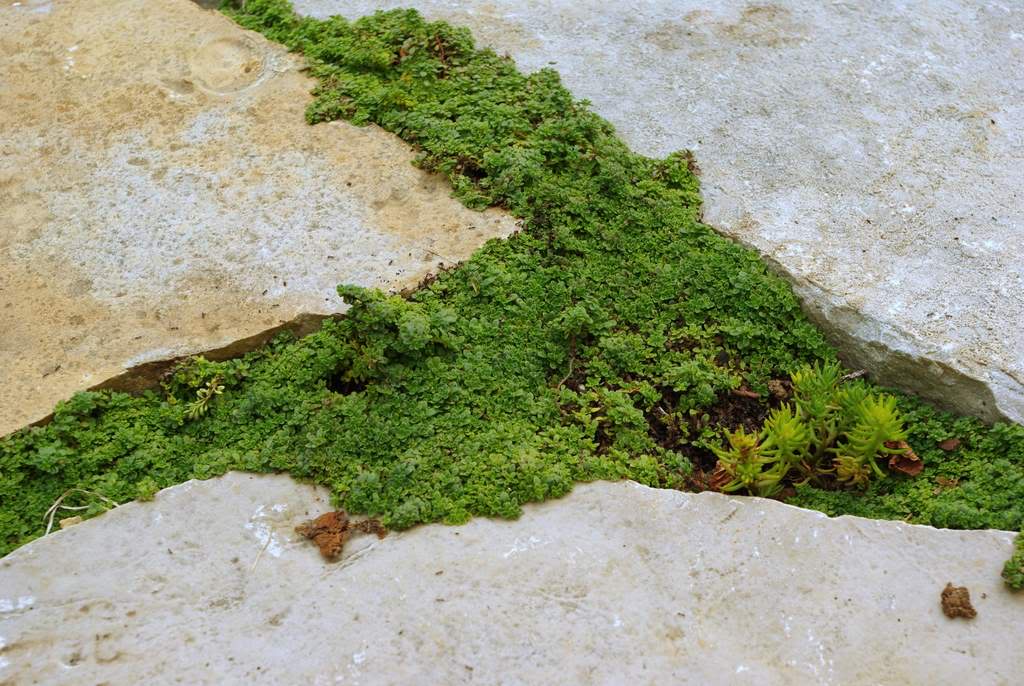









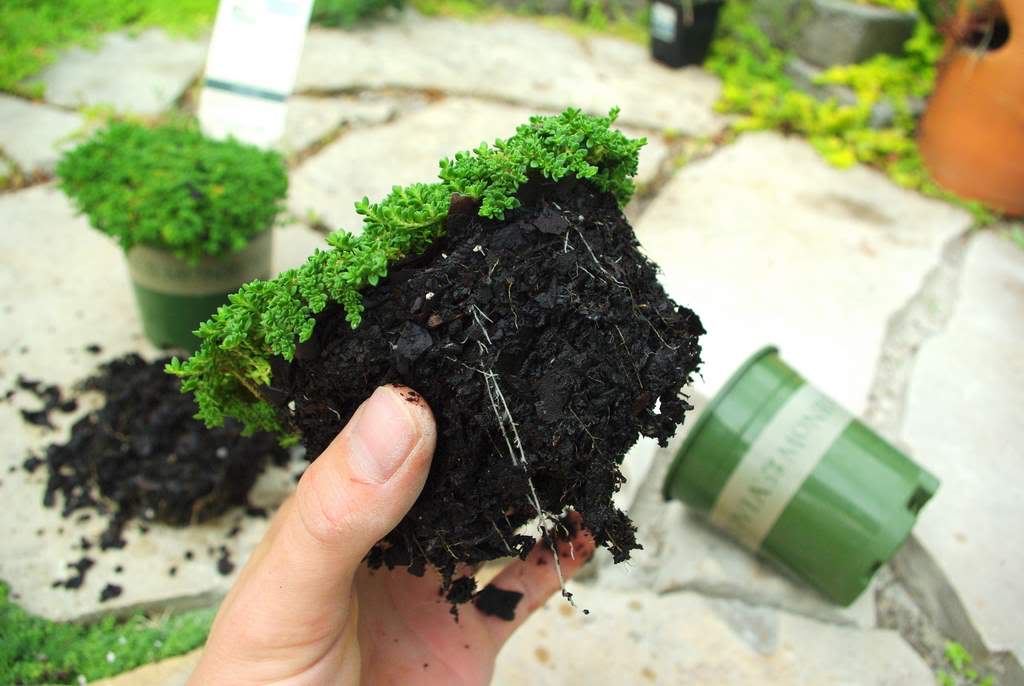


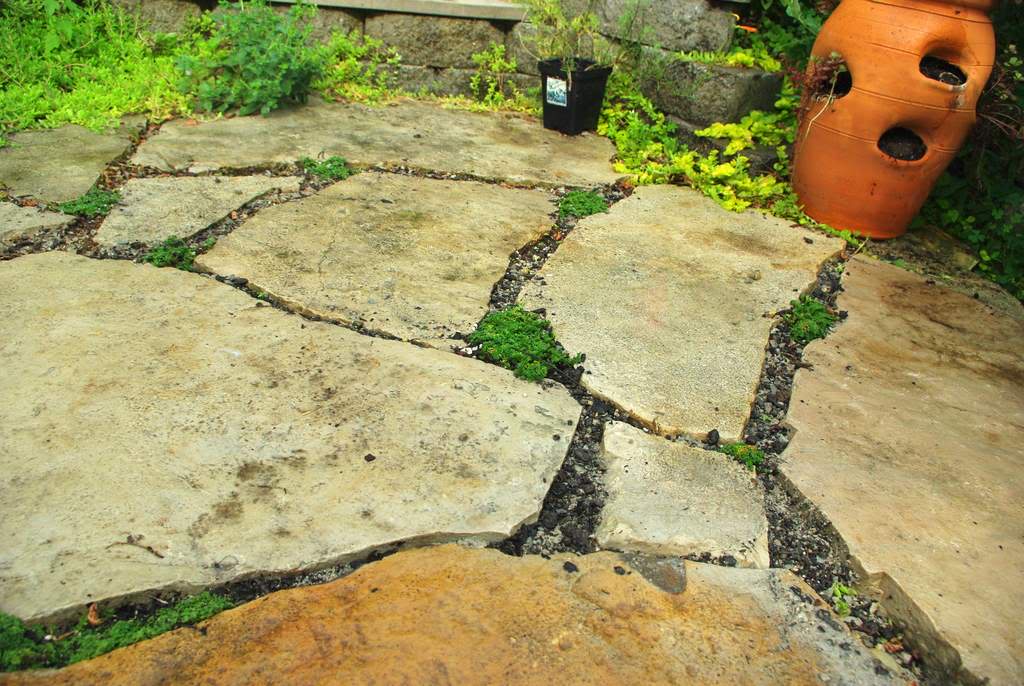






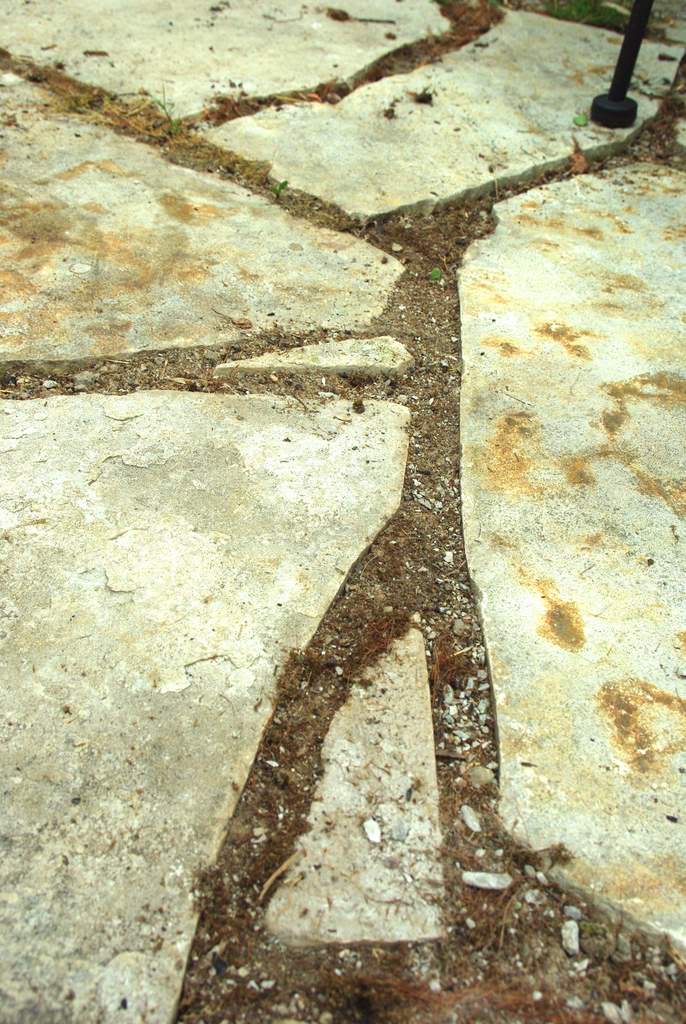
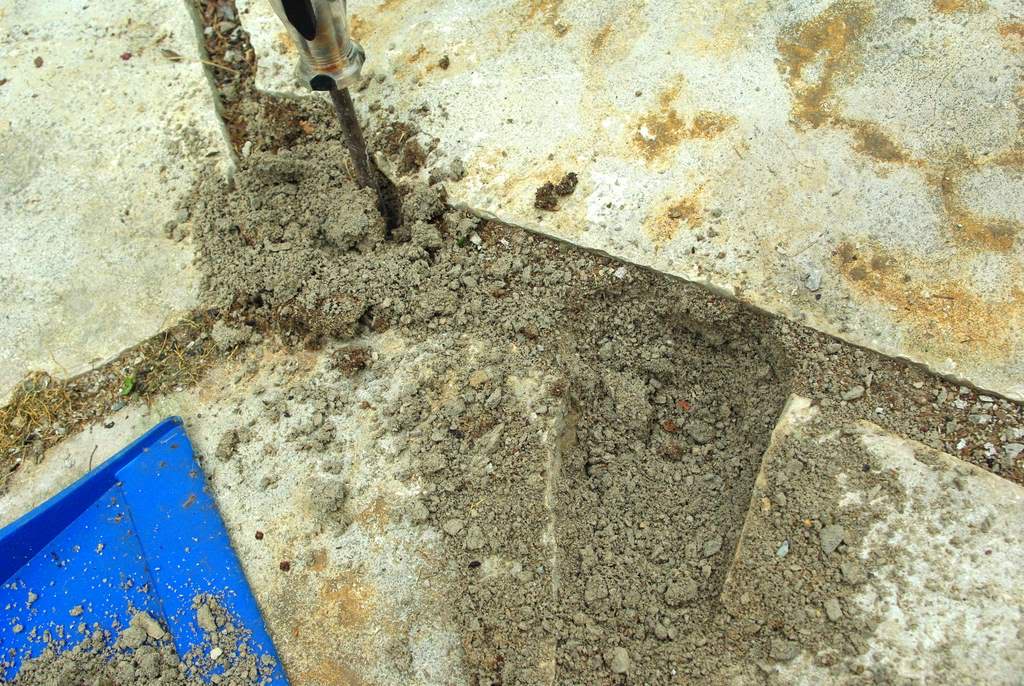



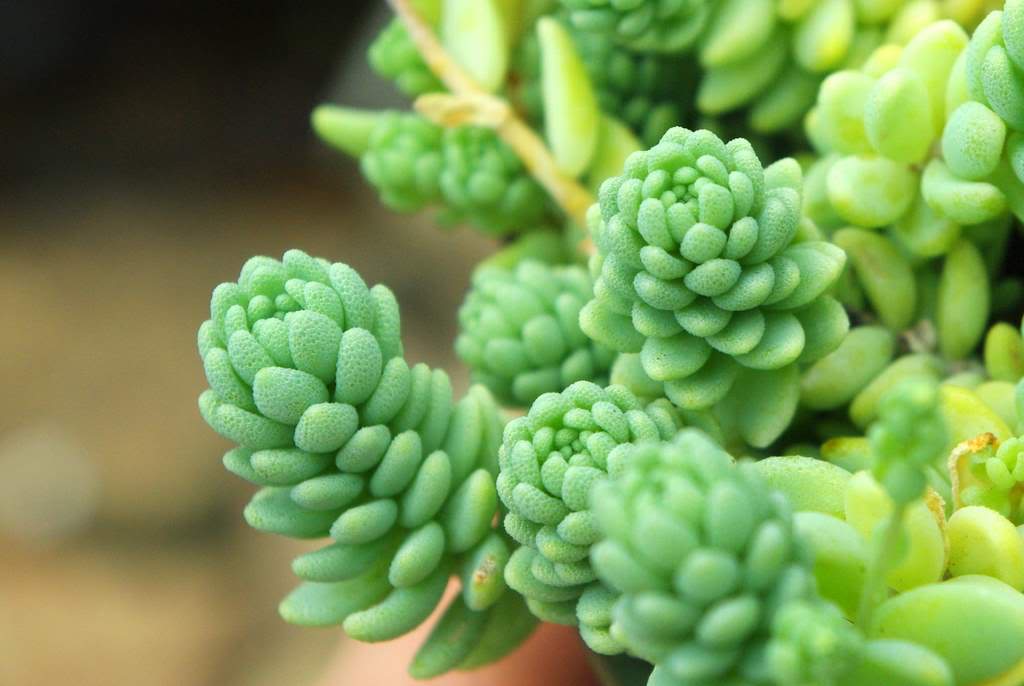




Hi, this is a great blog. My problem is that the spaces between the flagstones on my patio are soft, so if a dinner guest doesn't set her chair properly, one of the legs is is liable to sink into the crack, causing a disaster. What can I use to fill the cracks, short of cement, that will solve that embarrassing problem? Thanks, Mary
ReplyDeleteTwo words: polymeric sand. Cement won't work because it will crack. This stuff is designed for filling cracks.
ReplyDeleteok - we're doing this exact same thing right now. We have similiar flagstone patio and are considering the exact plants you mentioned to fill the 2-3" cracks. I'm interested to see what your patio looks like now? Do you have a more recent photo of the differences between the sedum and the thymes?
ReplyDeleteThanks!
Please update us on your thyme and sedum in the flagstone. Very pretty!
ReplyDeleteGwen: What I've discovered is that although the patio gets lots of sunlight in the early part of the year, come mid-summer it's in full shade due to the overhead vines. The end result is that *nothing* really grows in those cracks -- certainly not well enough to overpower the weeds. It's a constant battle for me.
ReplyDeleteThose green plants in between those cracks actually look nice. I think it's a great idea that they actually grow between those cracks. I think i want to do this for the cracks i found recently. It's better than covering them with something else.
ReplyDeleteDHLandscapeDesign.com
Hi -- looks like it's been a few years since your project began. Any updates as to how the thyme worked over time? (ha).
ReplyDelete